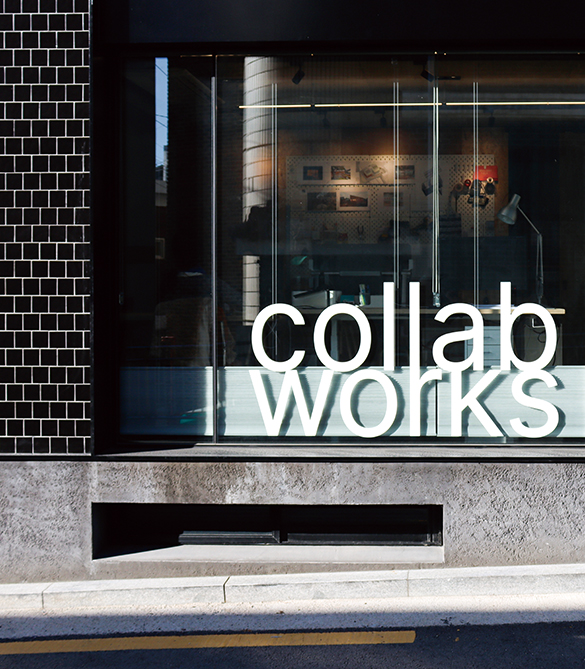SPACE February 2024 (No. 675)
‘I am an Architect’ was planned to meet young architects who seek their own architecture in a variety of materials and methods. What do they like, explore, and worry about? SPACE is going to discover individual characteristics of them rather than group them into a single category. The relay interview continues when the architect who participated in the conversation calls another architect in the next turn.
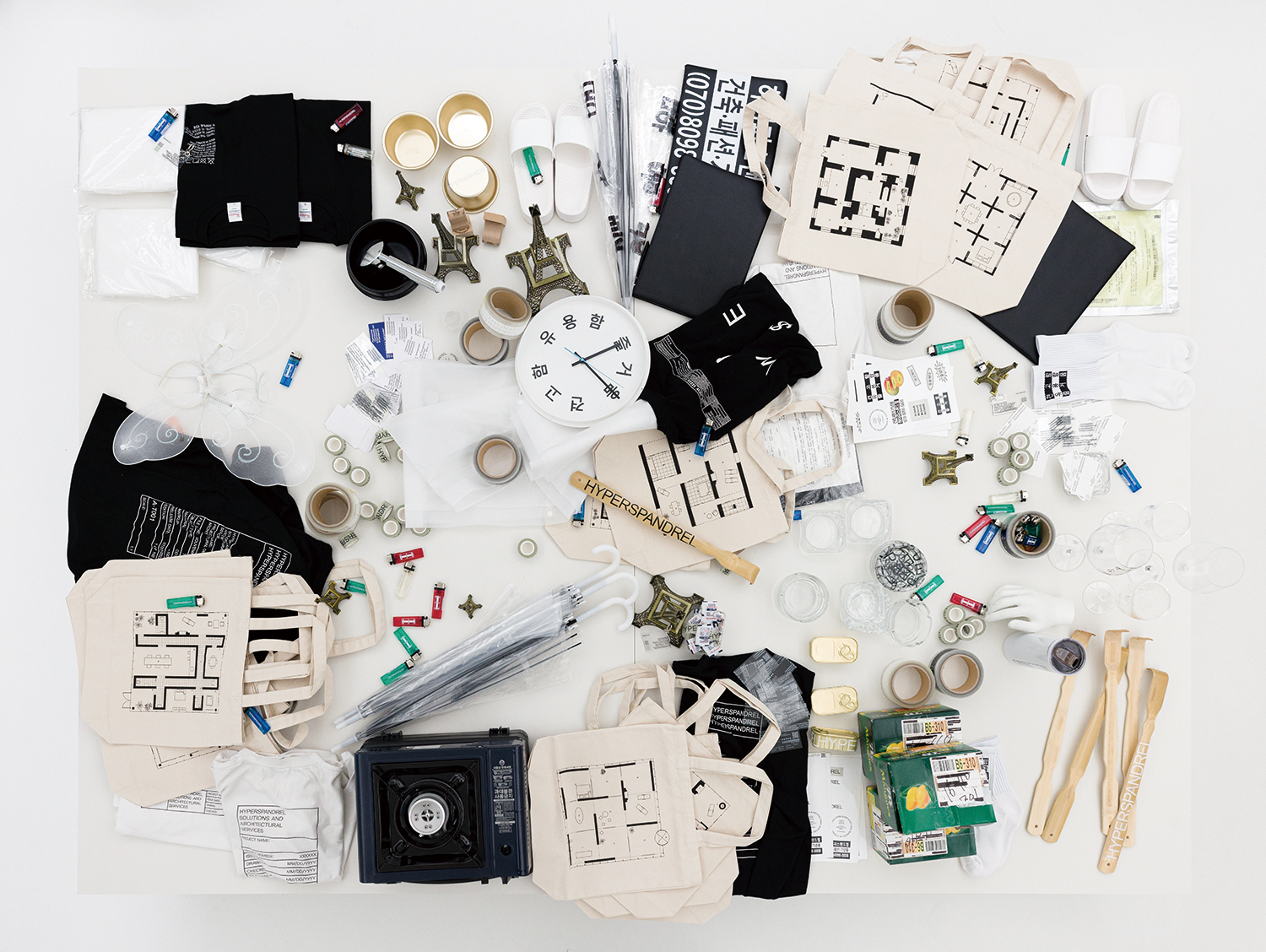
Image courtesy of pushtoenter
interview Chon Jaewoo principal, HYPERSPANDREL × Kim Jia
Drifting into the Unknown
Kim Jia (Kim): Thanks for inviting us to your home office during this busy time of year.
Chon Jaewoo (Chon): I really like being at home. I often have friends over, and last Christmas, I invited people who didn’t have any plans and we spent time together. Since I don’t have a separate office, I work and socialise with people at home.
Kim: I heard you came to Korea not long after completing your studies in Canada and working in various places around the world.
Chon: Around the age of nine, my family and I emigrated to Canada. I’ve spent more time in Canada than in Korea, and I hold Canadian citizenship, not Korean. Unlike the United States, where they emphasise the American identity regardless of one’s cultural background, Canada has a social atmosphere that encourages immigrants to preserve their cultural identity. Consequently,
I always had a longing for Korea deep in my heart. I settled here around 2020, and it was the outbreak of the Coronavirus Disease-19 (COVID-19) that served as the turning point. At that time, I was working as a project manager at an architectural firm in China, and since the initial outbreak of COVID-19 happened in Wuhan, I was essentially in ground zero. With Korea being physically close and having a special place in my heart from my childhood, I thought it was the perfect opportunity to create something meaningful here.
Kim: It must have been challenging to establish yourself and work in a new environment without any prior connections or foundations.
Chon: It was pretty much like starting from scratch. (laugh) Initially, I mostly worked as a freelancer for different architectural firms. Simultaneously, I participated in several competitions on a personal level, but the outcomes were not very favorable. It was only when I was chosen as a researcher in residency at the Asia Culture Center (ACC) that I began contemplating ways to stay in Korea for a more extended period and focus on my projects.
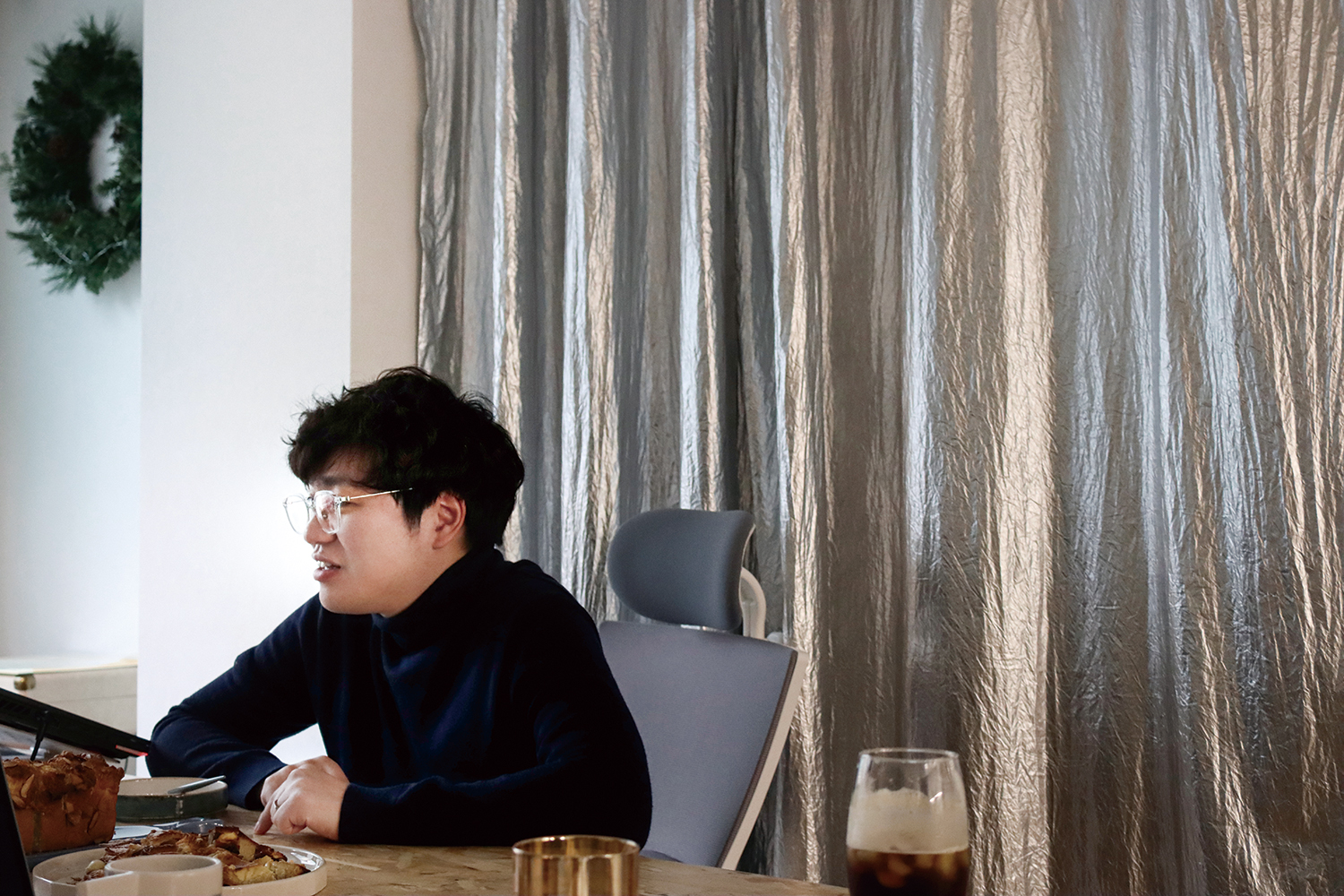
Fringe to Fringes
Kim: Currently, you’re operating under the name HYPERSPANDREL. Can you tell us when and how HYPERSPANDREL started?
Chon: Unlike some other architects who formally establish their offices at a specific moment, that didn’t quite align with my approach. Making declarations like ‘I’m starting an office now, and I’m going to do my projects’ has always felt challenging and unfamiliar to me. Since my school days, I’ve been consistently contemplating the type of architecture I wanted to pursue. So, HYPERSPANDREL was more of a term that reflected my interest in spatial concepts before functioning as an office. I officially registered it as a business in 2021, but I had been thinking and operating under the name HYPERSPANDREL before that.
Kim: Spandrel is a byproduct that emerges during the creation of an arch. What significance does the name carry?
Chon: I find the attributes of byproducts particularly intriguing. When you examine contemporary or modern architecture from earlier periods, you’ll notice that all the elements are tightly interconnected, continuous, and smooth. There’s an attempt to minimise byproducts like joints. However, nowadays, these byproducts are becoming increasingly unavoidable. For example, the size and quantity of spandrel panels used to maintain the continuity of glass in curtain-wall buildings has expanded. This is due to the growing need for various elements in buildings to ensure human comfort and convenience, leading to an emphasis on facilities and structures. Yet, these areas don’t constitute the actual living spaces for people. Consequently, contemporary architecture often strives to conceal elements perceived as byproducts. Nonetheless, if you shift your perspective, these byproducts could potentially evolve into a novel architectural realm. It’s something of a response to the notion of ‘Junkspace’ championed by Rem Koolhaas. Since I was born during the era of Junkspace, I have reservations about labeling the spaces of our time as ‘junk’. In the movie The Dark Knight Rises (2012), the villain Bane tells Batman something similar: ‘You adopted the dark, but I was born in it.’ In essence, these things classified as junk are both materials and narratives to me. HYPERSPANDREL represents my personal response to how contemporary architectural and environmental phenomena can be acknowledged and addressed.
Kim: What does HYPERSPANDREL focus on in terms of byproducts?
Chon: The idea of byproducts becoming more significant in their own right is fascinating. Slavoj Zizek once questioned why people go to the opera house and pondered whether the opera house truly qualified as a public space. While it might seem like a public space due to its cultural significance, it’s not entirely public considering the expenses involved in attending a performance and enjoying cocktails afterwards. According to him, people visit the opera house more for socialising than for the actual performances. You often see this in movies, where characters meet in the opera lobby while planning their activities, treating the performance as a mere alibi. In our context, this lobby represents the spandrel. Zizek proposed that if this approach leads to more social interaction, it might be better to turn the opera house into a lively lobby. HYPERSPANDREL’s mission revolves around highlighting and maximising the presence of spandrels, both within and outside architectural spaces.
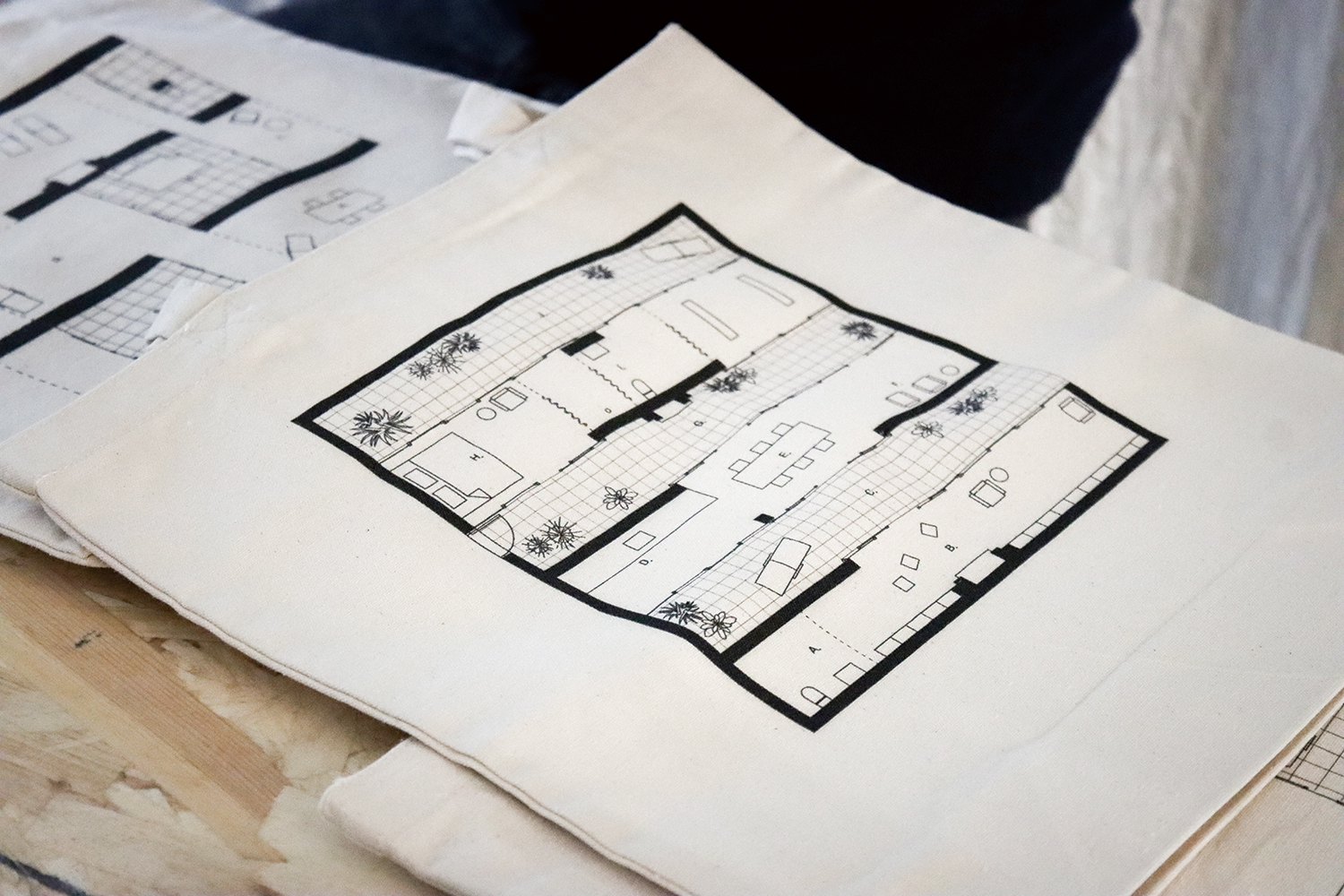
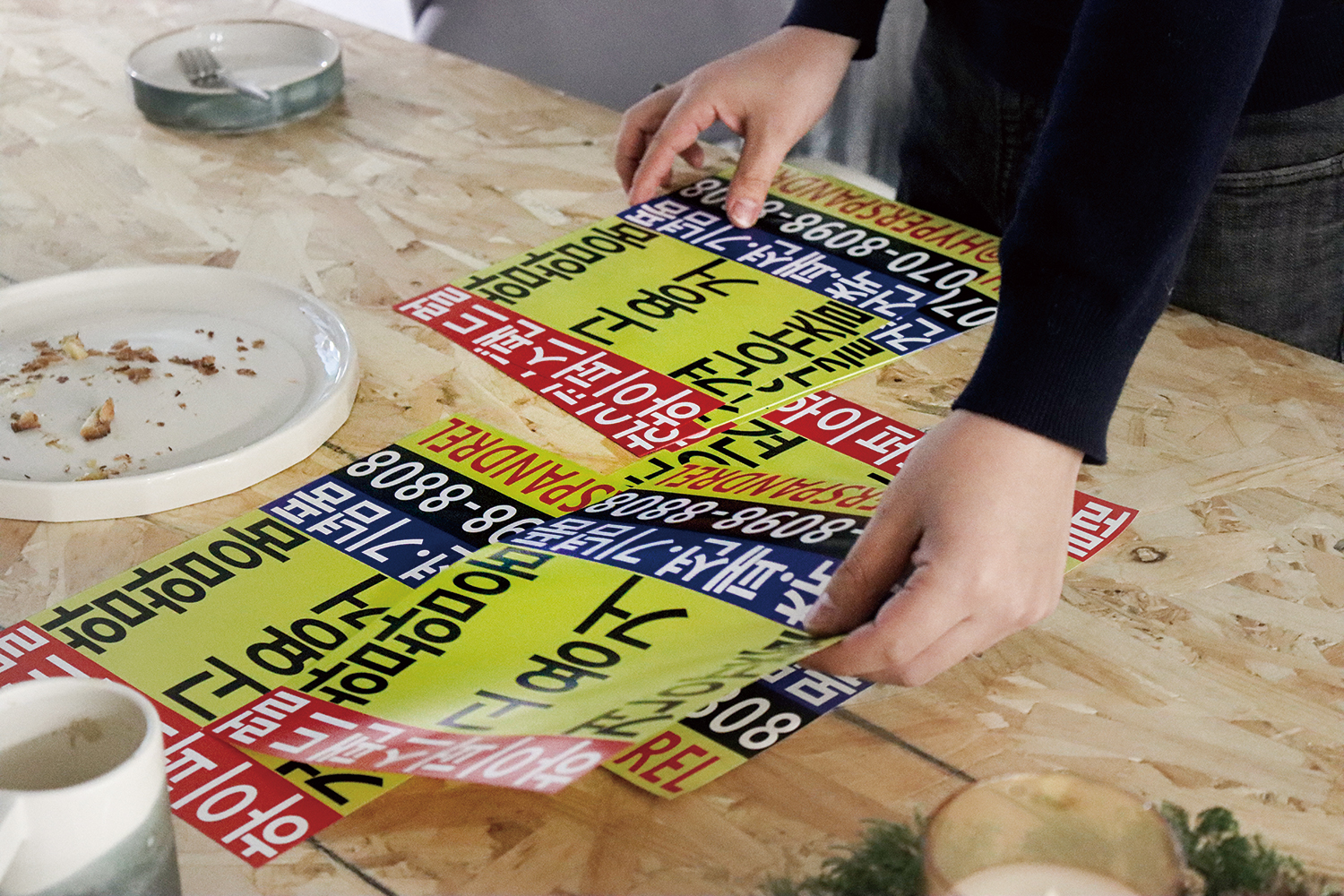
Coulda Woulda Shoulda Architecture
Kim: Along with your interest in byproducts, you’ve also advocated for ‘architecture without buildings’. You aim for ‘debuilding’ architecture.
Chon: I had doubts as an architect if I should only build buildings. In fact, building just one structure involves a lot of work. There are various processes from design to construction, and numerous byproducts like drawings and models are created in that process. However, people ultimately pay attention only to the completed architectural structure. While the architectural structure itself is important, considering the substantial resources and time invested in its production, I felt that architecture, when limited to just buildings, narrows both its audience and the architect’s scope. Therefore, I wanted to interpret and expand the field of architecture more comprehensively. Unbuilt architecture often leads to what is commonly referred to as paper architecture, and there are prejudices associated with it. Criticisms often arise, claiming that it’s just architecture done through words. However, by not giving precedence to architectural structures and being open to various forms, I believe we can discover new possibilities.
Kim: As a continuation of this, you’ve been producing fashion items and souvenirs such as eco-bags, t-shirts, and rings. How do these items specifically relate to architecture?
Chon: It’s related to the expansion of the architectural medium.
For instance, souvenir shops often sell small-scale models of famous buildings like the Eiffel Tower. I saw these as architectural structures on an equal level. Furthermore, fashion evolves at a much faster pace than the enduring and substantial nature of architecture. Fashion is constantly in motion, not fixed in one place, which has a ripple effect. I attempted to incorporate architectural concepts onto t-shirts and eco-bags using this characteristic. I transformed the eco-bag into a canvas and turned the drawings into graphics. For t-shirts, I magnified the washing instructions, essentially the spandrel, prominently on the front as part of the design and logo. The idea for the ring originated from an exploration of decorations. I noticed that columns, which are both structural elements and decorative elements, resembled finger joints. While modernism, including Adolf Loos, opposed decoration, accessories, which are decorative elements of the human body, continue to be widely used. So, I thought, ‘Architecture, you go your way, and I’ll make rings.’ The ring’s design was inspired by the capitals of the Erechtheion, an Ionic temple next to the Parthenon, and I only made 16 rings, one for each actual column, and they have all sold out now. (laugh) I plan to prepare the next series using different columns.
Kim: You’ve been making flyers and posters that capture a unique sensibility and sharing them online and offline. Instead of being sleek, your designs have a rugged and straightforward style that grabs people’s attention. (laugh)
Chon: I’ve always had a fascination for how things are expressed. In an era where everything is meticulously designed, I find myself pondering how I can effectively convey my story. Nowadays, there are plenty of individuals who excel at everything from one to ten. Paradoxically, well-executed designs often become so familiar that they pass by unnoticed. I recall a Japanese advertisement that left a lasting impression on me. Someone mistakenly uploaded their own ID photo onto a subway advertising board, and an employee of the company planning the ad accidentally sent the wrong data. To my surprise, it went viral and garnered significant attention. It turned out that even the mistake was a deliberate act. (laugh) That was an eye-opener for me. ‘Ah, it seems people only take notice when there’s an error.’ So, for a period, I concentrated on deliberately introducing errors. Flyers and posters are a manifestation of this endeavour. I intentionally embraced an old-fashioned design with a font reminiscent of calligraphy. Initially, it received quite a positive response. However, these days, it feels like even this type of error has become a genre of its own, so I’m proceeding with caution.
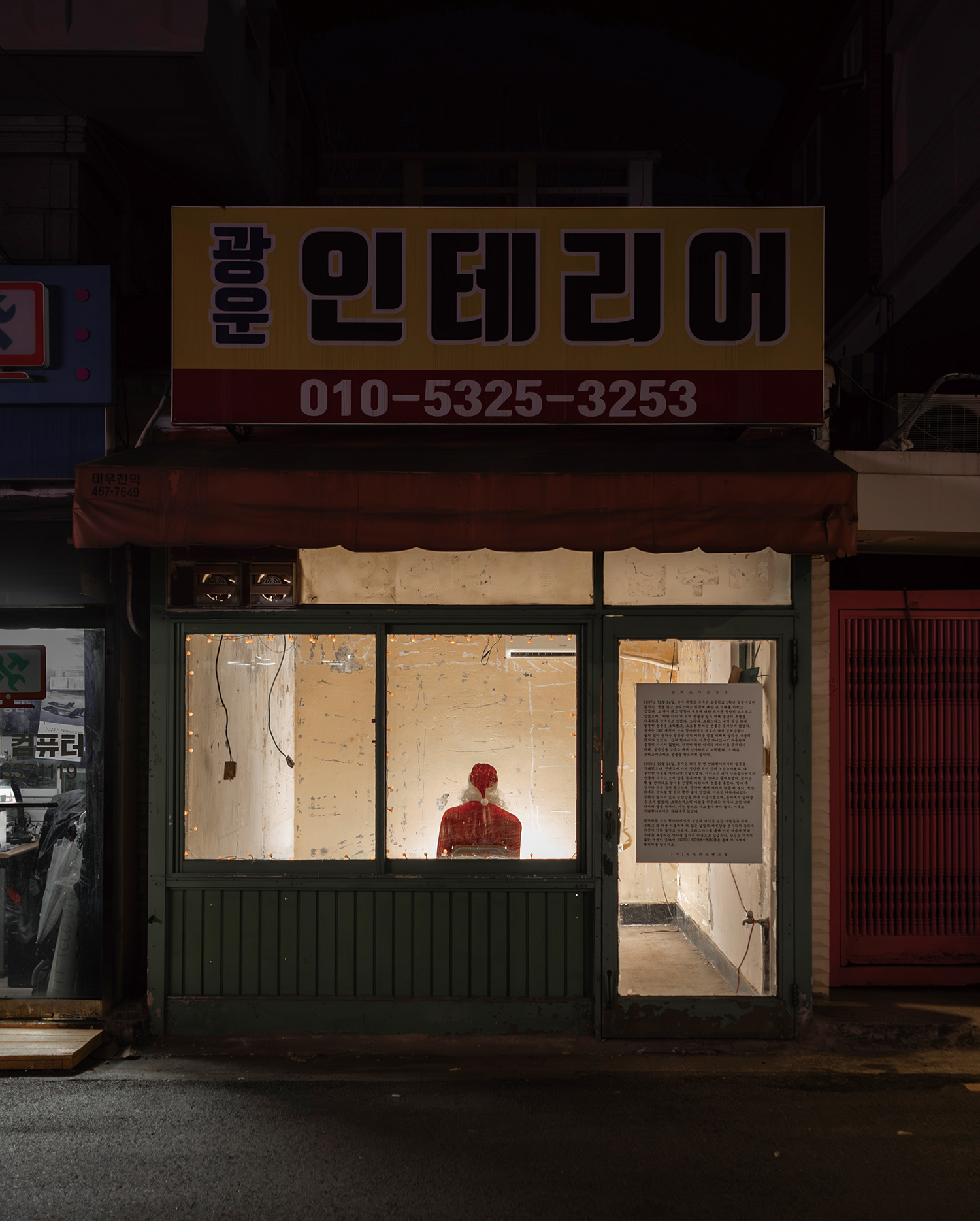
©HYPERSPANDREL
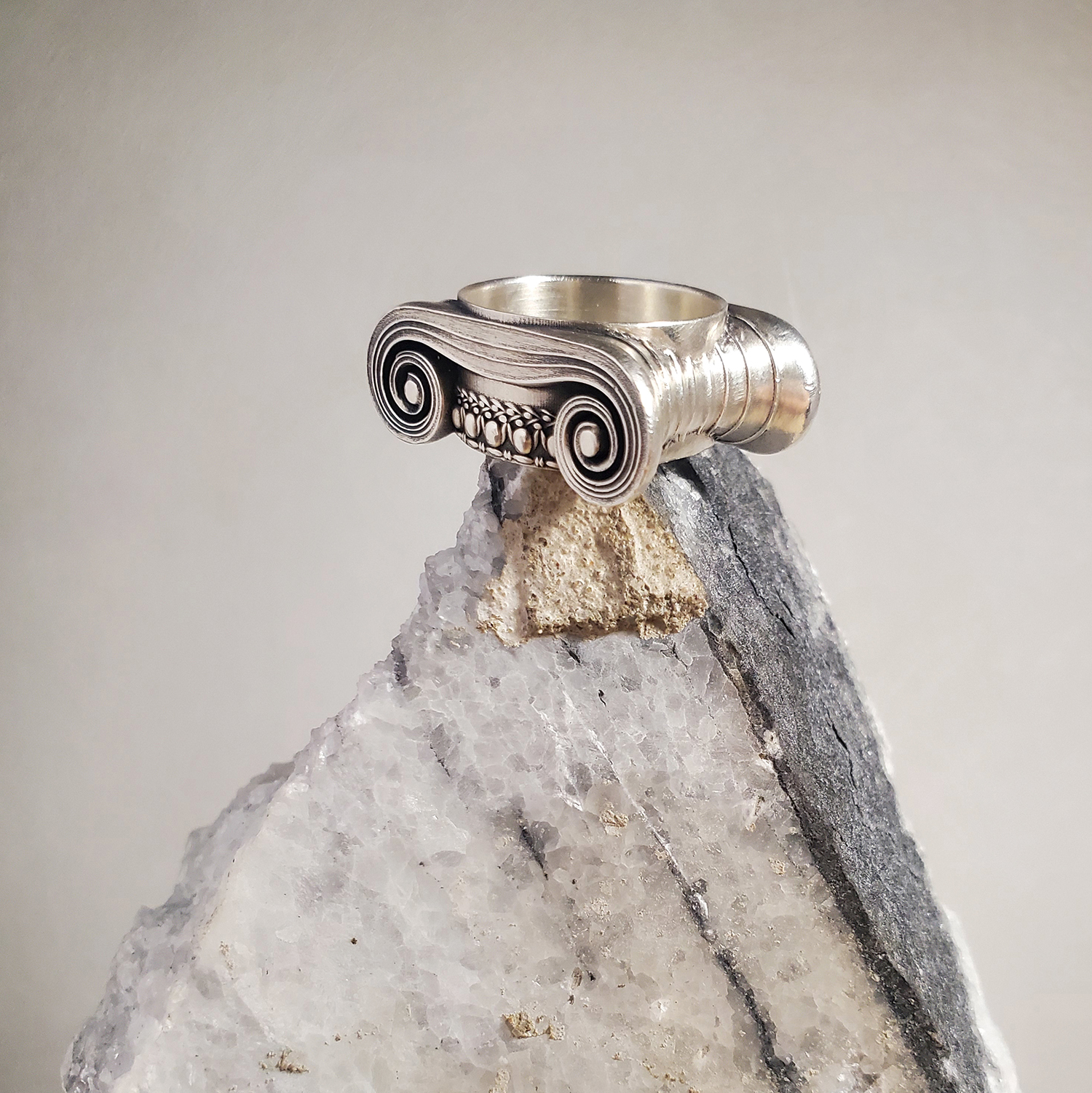
©HYPERSPANDREL
Moving Forward in Relationships
Kim: It’s fascinating how a series of activities carried out by HYPERSPANDREL is amplified when it meets the medium of Instagram. How do you perceive and utilise Instagram?
Chon: Initially, when I was working at a company, I used it to post my own drawings and personal work to relieve frustration with corporate demands. However, during the COVID-19 period, I started using it more actively than before. Instagram used to be a platform for beautiful pictures, but now it seems to have become a discourse platform. Since it connects people worldwide, there’s a movement where theorists and architects from various countries participate, sharing their opinions and exchanging ideas on various issues. Nowadays, it’s safe to say that most of the audience is digital. So, I consciously participate. Currently, I use it to share HYPERSPANDREL’s thoughts and work and communicate with the audience.
Kim: I heard that you’re active as an artist and a member of the Korean Institute of Architects.
Chon: I met Kim Junghee (principal, pushtoenter), when I participated in the Seoul Biennale of Architecture and Urbanism 2021. She empathised my thoughts on architecture and developed the idea, leading to my first solo exhibition ‘Souvenirs without Monuments’ (2022) there. In reality, the title ‘artist’ feels unfamiliar to architects. Artists are people who plan and create something themselves and present it to the world. In contrast, architects usually find it challenging to work without clients. However, I believe architects also possess artistic abilities.
Rather than waiting for someone to approach them, they can proactively present something to the world. At the Korean Institute of Architects, I assist with various tasks as the youngest member.
I also participated as an artist in the Seoul Green Ring (SGR) project organised by Chun Euiyoung (professor, Kyonggi University) for the Seoul Biennale of Architecture and Urbanism 2023 and coordinated related digital programmes.
Kim: You continue your work in various collaborative relationships. What does collaboration mean to HYPERSPANDREL?
Chon: I think there are limitations to working alone. Initially, HYPERSPANDREL had no intention of working alone. I always longed for a partner, but they always left me. (laugh) So, in the absence of a partner, I sought various collaborations, conducting projects within relationships with different collaborators. Above all, I consider the concept of a crew to be important. Especially in architecture, there’s a need for a force that can lead each other. Even if we are working on different projects, mutual support and some level of dialogue can form an implicit community. Historically significant architectural movements have always had such movements.
Kim: I’m curious about your future plans. What kind of architect do you aspire to become?
Chon: I’ve mainly discussed conceptual work, but I also love buildings. (laugh) I plan to continue various activities without setting boundaries. The most important thing is the purpose behind what I’m doing. I’m in the process of finding that answer for myself. More specifically, I want to be an architect with a narrative. Not just talking to myself, but engaging in dialogues with what I’ve received and having it resonate meaningfully with someone else in a different way.
Chon Jaewoo our interviewee, wants to be shared some stories from Heo Sungbum (principal, architectural/practice) in March 2024 issue.
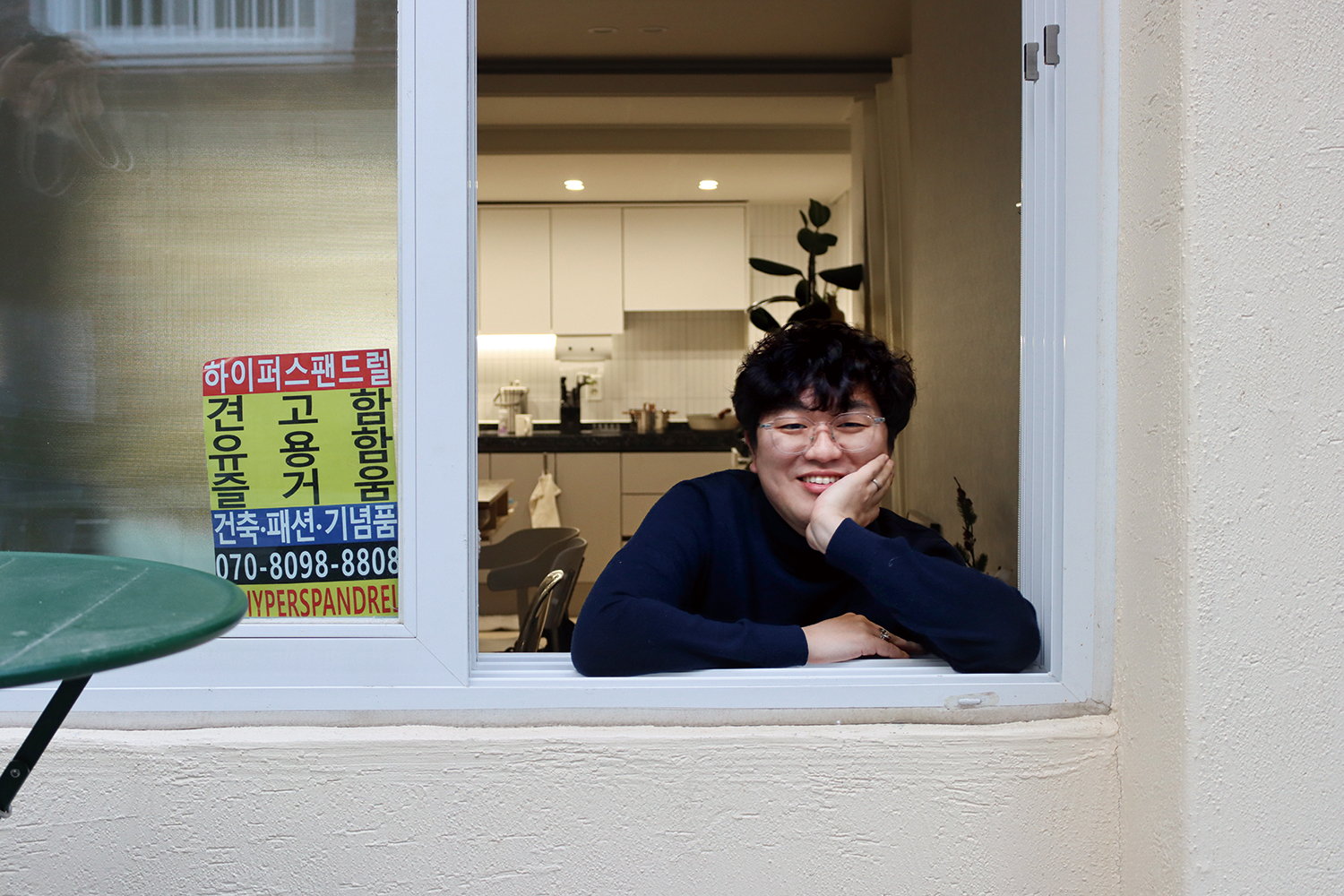
You can see more information on the SPACE No. February (2024).

Chon Jaewoo
Chon Jaewoo is the director of HYPERSPANDREL. His work spans architecture, art, media, graphic, and product design. He obtained his bachelor’s degree from the University of Waterloo and a master’s degree from the Harvard Graduate School of Design. He currently teaches at Hanyang University and Inha University. He is a Scorpio, and on top of that, he is a turbulent INTJ. Plus, his blood type is AB. Yikes. Generally, though, he is a sweetheart.
37





